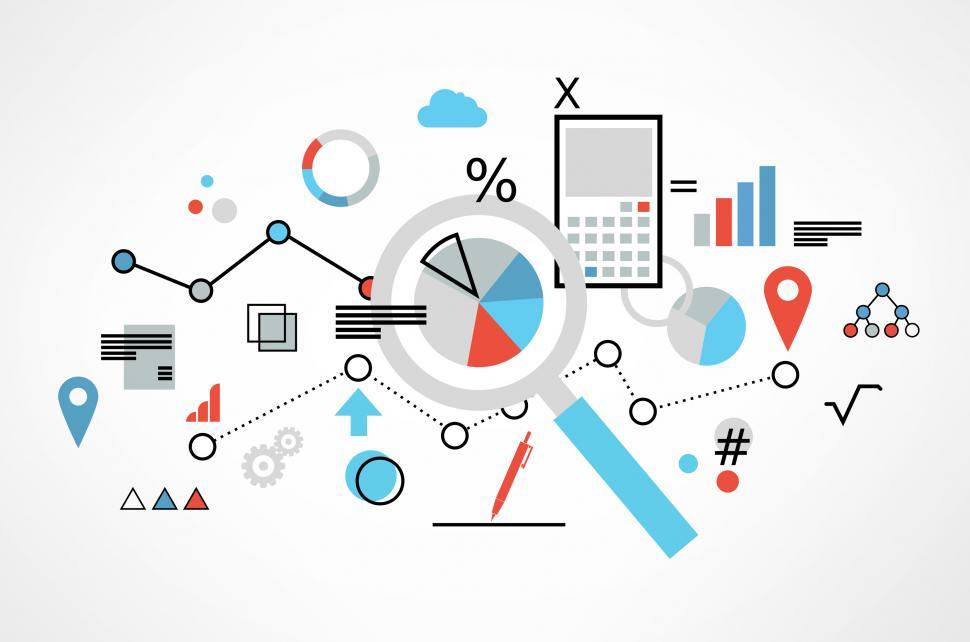There’s a lot of data out there, and it’s only growing in size. Whether you’re an SMB seeking expansion, a startup business keen on driving conversions, or an established brand owner—data matters. More important, however, is the way it’s applied. Between boosting visibility, enhancing your cross-market potential, or need to expand upon your current consumer segment, your sales team will be behind the steering wheel.
Today’s leading sales analytics strategies are backed by years of innovation: Assessing your brand’s performance while forecasting your major pathways to purchase isn’t necessarily easy. As any master salesperson will say: The best route to success is one not taken alone. Determining your campaign’s direction is tough when data isn’t applied diligently—and diligent data application, understandably, takes plenty of resources.
Balancing Sales and Marketing Analytics
The balancing act needn’t be undertaken alone, and today’s providers are great at leading while also keeping brand leaders informed, optimized, and well-equipped. Even though sales data analysis requires a lot of long-term and short-term goal-planning, the process is much easier when there’s an expert or expert team to take ownership over the technical details that make an analytics solutions successful.
But what are these technical details, anyway?
Let’s check them out for ourselves: Sales and marketing analytics go hand in hand, but knowing the why’s and how’s of their partnership can set you up for success, from the get-go. Listed below are the top data-centric, result-driven strategies that today’s innovative analytics teams can tackle—and which no sales team should pursue alone.
One: CRM Prospect Management
Customer relationship management is pretty approachable, but in-depth analytics are needed to stay afloat in todays’ digital markets. When a sales team is backed by data-driven help, they make the most out of their CRM database. CRM databases are incredibly valuable, in any event, but many sales teams tend to struggle with proper application. Fortunately, a team dedicated to the ins and outs of your CRM can streamline otherwise disjointed tools.
The result of this form of approach is an important one: Actionable sales reports.
Because a CRM is capable of tracking many prospects, your next strategy’s effectiveness will only increase as your CRM’s potential does. After all, a CRM put to good use can run itself: Between automated customer support services to real-time email follow-ups, a professionally handled CRM can transform a business—aligning its sales team with instant, seamless access to data.
Two: Lead Engagement
Not just any form of lead engagement, either. Sales teams backed by cutting-edge data analytics tools, as well as specialized data management support, save a lot of time—as well as precious energy. When applied effectively, sales data can identify leads instantly. This is a major benefit, as even your most valuable, reliable, and actionable customers can change direction, suddenly. Unfortunately, it’s all too easy to drive sales based upon outdated data. Even more unfortunate is the wide array of sales teams who fall into this pitfall: Without highly relevant data insights driven from immediate prospect analysis, a sales team can fall behind their competitors.
We’re in luck, though, because the teams specialized in managing sales and marketing analytics free up plenty of room. As such, your team can define the best leads—and the best way to reach them. Even better: You’ll be able to establish monthly revenue goals much easier, as the sheer reliability of predictive analytics is powerful enough to create financing frameworks with confidence.
Three: Cross-Channel Experiences
Today’s shopping brings customers online, and there are plenty of e-commerce locations to choose from. Getting the most out of a branded website, however, often requires strategies geared towards physical locations. In the past, determining the customer’s path was simpler. Some of today’s storefronts have taken form as email lists, social media pages, live media updates, however, making cross-channel strategies not only important—but vital.
Keeping track of every customer interaction isn’t possible, of course, which has driven a number of data-driven innovations. Even if your customers are wide-ranging in terms of shopping behavior, however, you can still create powerful cross-channel strategies to connect with them. Sales and marketing analytics, when streamlined together, can identify key performance indicators—and more.
When it comes to identifying these indicators, your team can also gain diagnostic pictures of each marketing effort’s overall performance on a per-lead basis. By tracking revenue, acquisition costs, and leads, you’ll be well-equipped to create a sales strategy that is both proactive and reactive. This is where sales and marketing analytics, when effectively paired, shine the most.
Supported by tech-rollouts, industry knowledge, and more, your specialized data analysis partner can help you boost your lead-to-customer ratio. Because every sales framework is different, your analytics-driven strategy can be custom-tailored to your needs.
Four: Self-Sustaining Analytics
Whether targeting landing page conversions, inbound marketing ROI or social media traffic, numerous opportunities exist for your sales team. At the same time, pursuing long-term goals via metrics possible: While short-term data can help boost your bottom line, long-term approaches can steadily grow your online presence. Identifying your inbound strategy’s likely ROI, for example, will establish a firm data reference foundation.
Before long, the lead-to-customer ratios you’ve come to rely upon can be used to achieve new heights. Today’s digital world might be bustling with social media traffic, search engine exploration, and e-commerce checkouts—but it’s definitely possible to create a memorable impact.
Your Next Strategy: Designed for Success
Every sales team starts somewhere, and today’s leading analytics experts love combining forces with them. Start building your strategy with the powerful tools, instant industry snapshots, and data-driven prospects designed for maximum impact. Digilant is here to help—empowering today’s strategies with the tech tools of tomorrow. We help our clients craft the campaigns they’ve always wanted, and we’re always ready to provide deep, core-industry insights to make pre-existing strategies even better.
Leading the way with comprehensive, flexible, and self-sustaining sales approaches, Digilant provides the marketing services which matter the most: Those built to last. Contact us today!






